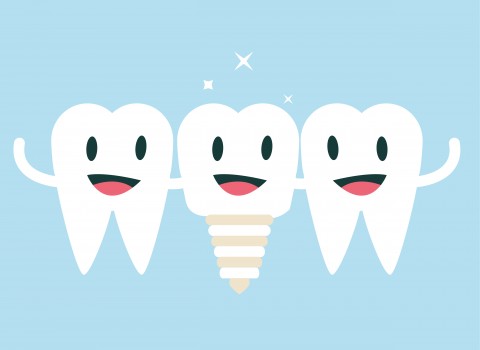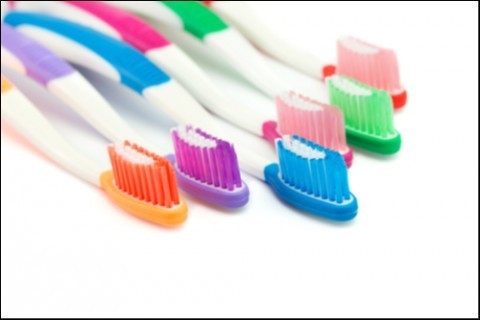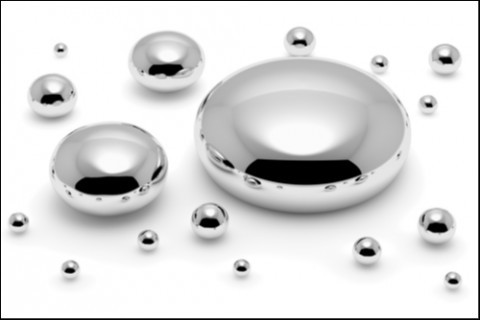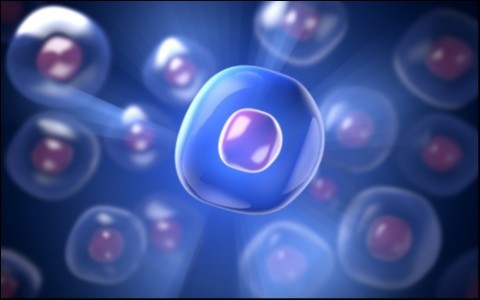 For patients who have lost teeth due to oral infections like periodontitis, a new spin on dental implants could help prevent similar infections from occurring in the future. Researchers at Katholieke Universiteit Leuven (KU Leuven) in Belgium have developed a dental implant with a built-in reservoir that can be filled with antimicrobial drugs to fight or prevent oral infection. We spoke to Dr. Gary Lederman of Bellmore, NY about this exciting new dental technology.
For patients who have lost teeth due to oral infections like periodontitis, a new spin on dental implants could help prevent similar infections from occurring in the future. Researchers at Katholieke Universiteit Leuven (KU Leuven) in Belgium have developed a dental implant with a built-in reservoir that can be filled with antimicrobial drugs to fight or prevent oral infection. We spoke to Dr. Gary Lederman of Bellmore, NY about this exciting new dental technology.
 With winter upon us and many of us planning on jetting off to warmer locales for vacation, a new study published in Science Daily may just add one more item to your pre-travel checklist: a visit to the dentist. If there’s even a chance your vacation could include scuba diving on its itinerary, Dr. Gary Lederman encourages you to have one of your twice-yearly dental exams prior to taking off.
With winter upon us and many of us planning on jetting off to warmer locales for vacation, a new study published in Science Daily may just add one more item to your pre-travel checklist: a visit to the dentist. If there’s even a chance your vacation could include scuba diving on its itinerary, Dr. Gary Lederman encourages you to have one of your twice-yearly dental exams prior to taking off.
According to a recent article published in The British Dental Journal, researchers at the University at Buffalo, in Buffalo, NY found that 41% of scuba divers surveyed reported what they referred to as "dental symptoms" in the water during a dive. These so-called ‘dental symptoms’ ranged from jaw pain to loosened crowns and even cracked teeth!
As your dentist, I have a great view of your mouth and airway at each appointment. And, as a neuromuscular dentist, I’m in a great position to help my patients who suffer from sleep apnea. The conversation on sleep apnea often begins with complaints about snoring. And, yes, snoring can interrupt your sleep but the sleep apnea that causes snoring is much more serious.
There are three kinds of sleep apnea and the first step in my sleep apnea treatment is diagnosing which a patient has. Obstructive sleep apnea occurs when the throat muscles collapse during sleep, obstructing the airway. Central sleep apnea happens when the brain fails to send the proper signals to control breathing. Mixed sleep apnea includes both conditions.
Once a patient is diagnosed, we determine which treatment will work best. I can create an orthotic that patients can use to keep the jaw in the proper position to maintain an open airway. Sometimes this is all the treatment a patient needs. Other times, it’s necessary to combine using the orthotic with CPAP treatment.
In all cases, the goal is to help patients breath fully while they sleep, resulting in restful nights, better function during the day and a lowering of risk factors for major diseases like heart disease and diabetes which are associated with Sleep apnea.
If you snore or your partner snores, please contact us for a consultation to begin diagnosis for sleep apnea. Call Today: 516-882-1764.
 Two recent discoveries by researchers around the globe are yielding promising results for those suffering from chronic periodontitis. Periodontitis is a gum infection that if left untreated, damages both the soft tissue and bones surrounding the teeth- and can eventually lead to their loss. Periodontitis is also responsible for a variety of illnesses including heart disease, diabetes, dementia, rheumatoid arthritis, and even certain cancers. But now, universities in the US and Australia have released two unrelated studies that offer hope to those who suffer from chronic periodontitis. Dr. Gary Lederman of Bellmore, NY discusses these findings.
Two recent discoveries by researchers around the globe are yielding promising results for those suffering from chronic periodontitis. Periodontitis is a gum infection that if left untreated, damages both the soft tissue and bones surrounding the teeth- and can eventually lead to their loss. Periodontitis is also responsible for a variety of illnesses including heart disease, diabetes, dementia, rheumatoid arthritis, and even certain cancers. But now, universities in the US and Australia have released two unrelated studies that offer hope to those who suffer from chronic periodontitis. Dr. Gary Lederman of Bellmore, NY discusses these findings.
 You may have noticed mercury fillings back in the news recently, following a recent study by the University of Georgia’s Department of Environmental Health. The study evaluated 15,000 patients and found that patients possessing 8 or more mercury amalgam fillings had 150% more mercury in their bloodstream than those with no amalgam fillings. While many dentists have switched over to resin composite fillings for health reasons, Dr. Lederman stopped using amalgam fillings over 20 years ago, long before anyone realized the full extent of the dangers of amalgams- but for completely different reasons.
You may have noticed mercury fillings back in the news recently, following a recent study by the University of Georgia’s Department of Environmental Health. The study evaluated 15,000 patients and found that patients possessing 8 or more mercury amalgam fillings had 150% more mercury in their bloodstream than those with no amalgam fillings. While many dentists have switched over to resin composite fillings for health reasons, Dr. Lederman stopped using amalgam fillings over 20 years ago, long before anyone realized the full extent of the dangers of amalgams- but for completely different reasons.
 A promising new study by the Columbia College of Dental Medicine at Columbia University is offering hope for the tens of millions of people around the world suffering from Temporomandibular Joint (TMJ) Disorder. In the study, researchers were successfully able to regenerate the cartilage within the temporomandibular joint using stem cells located within the jaw bone. Dr. Gary Lederman of Bellmore, NY is a neuromuscular dentist who specializes in the treatment of TMJ disorder. We spoke to him about the implications of this study, and what the findings could mean for patients living with TMJ disorder.
A promising new study by the Columbia College of Dental Medicine at Columbia University is offering hope for the tens of millions of people around the world suffering from Temporomandibular Joint (TMJ) Disorder. In the study, researchers were successfully able to regenerate the cartilage within the temporomandibular joint using stem cells located within the jaw bone. Dr. Gary Lederman of Bellmore, NY is a neuromuscular dentist who specializes in the treatment of TMJ disorder. We spoke to him about the implications of this study, and what the findings could mean for patients living with TMJ disorder.
The TMJ joints are the joints which anchor the lower jaw to the upper jaw, allowing the jaw to open, close, speak, and chew. If the temporomandibular joint becomes misaligned, it can become painful enough to restrict the movement of the jaw. This is known as TMJ disorder. Though there are many treatments for TMJ disorders, most only treat the symptoms of the disorder and not the cause. One successful method of treatment is neuromuscular dentistry, which while it does treat the cause, cannot currently heal the cartilage in the temporomandibular joint- in fact, until recently, nothing could. This is because the cartilage found in the TMJ is fibrocartilage, a type of cartilage also found in the vertebrae and knee meniscus that doctors long believed could not regrow or heal. In fact, damage to this cartilage is considered permanent- but the findings of this study have the potential to change everything.
Researchers discovered that when they took stem cells directly from the temporomandibular joint of a mouse, manipulated those cells, and transplanted them directly back into the fibrocartilage of the joint, the implanted stem cells spontaneously regrew damaged cartilage within the joint. Even more promising is that the cells used were the subject’s own cells. This is important because using donor stem cells has a lower rate of success because donor stem cells can often be rejected by the body- and even when they’re accepted, can introduce pathogens and increase the instance of tumors in the area of implantation.
The ability to regrow fibrocartilage offers hope for not just patients suffering from TMJ disorders, but patients with knee and spine injuries, and children suffering from juvenile idiopathic arthritis, a condition which often causes stunted growth in the jaw- and for which there is currently no treatment.
Though an actual stem cell treatment is not yet available to the public, Lederman is optimistic. "This type of stem cell treatment may be the missing piece of the puzzle between neuromuscular dentistry and eliminating TMJ pain entirely in some patients," Says Lederman. In the meantime, there is no need for patients to needlessly suffer through treating just the symptoms of their TMJ disorder. For those patients, Lederman suggests giving neuromuscular dentistry a try. "Neuromuscular dentistry can actually put the temporomandibular joint back into its optimal alignment by repositioning the jaw. This will eliminate pressure on the teeth, muscles, and joints, so they all work together harmoniously. By realigning the jaw, you can drastically reduce or even eliminate TMJ pain." While nobody knows how long it may be before the stem cell treatment is available – or if it will ever become a reality, "For now," says Lederman, "it offers hope. "




